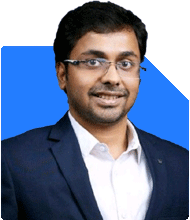Sanjeev Govila | Answer |Ask -Follow
Financial Planner - Answered on May 29, 2023
He has over 12 years of experience in financial planning and is a SEBI certified registered investment advisor; he is also accredited with AMFI and IRDA.... more

Sir My father bought a plot 8m 1950 or 1952. Constructed a 2 BR house in a town in east Bardhaman. My father died in the year 1954 or 55 when I was class 6. My mother died in 2003. In the record of land 3 brothers name shown. We have sold some part of the land in 2 installments and now all brothers wants to sale balance portion. Since no amount is known for cost of land and house construction how to index and arrive at LTCG for me a Sr Citizen.
1. Visit the official website of the relevant government authority responsible for property valuation.
2. Look for the section or service related to property valuation or land records.
3. Access the property valuation service and provide accurate plot details.
4. Retrieve the valuation information displayed on the website, including market value and other relevant factors.
5. If necessary, follow the instructions to request an official valuation certificate.
Please note that online property valuation data availability and accuracy may vary, so it's advisable to refer to official government websites and consider consulting a professional or local Revenue Department for further assistance.
You may like to see similar questions and answers below
Samkit Maniar | Answer |Ask -Follow
Tax Expert - Answered on Aug 28, 2024
Mihir Tanna |1090 Answers |Ask -Follow
Tax Expert - Answered on Sep 09, 2024
Mihir Tanna |1090 Answers |Ask -Follow
Tax Expert - Answered on Oct 18, 2024
Vipul Bhavsar | Answer |Ask -Follow
Tax Expert - Answered on Sep 02, 2025
Radheshyam Zanwar |6747 Answers |Ask -Follow
MHT-CET, IIT-JEE, NEET-UG Expert - Answered on Dec 16, 2025
Shalini Singh |181 Answers |Ask -Follow
Dating Coach - Answered on Dec 16, 2025
Patrick Dsouza |1429 Answers |Ask -Follow
CAT, XAT, CMAT, CET Expert - Answered on Dec 16, 2025
Nayagam P P |10858 Answers |Ask -Follow
Career Counsellor - Answered on Dec 16, 2025
Nayagam P P |10858 Answers |Ask -Follow
Career Counsellor - Answered on Dec 16, 2025
Samraat Jadhav |2510 Answers |Ask -Follow
Stock Market Expert - Answered on Dec 16, 2025
Samraat Jadhav |2510 Answers |Ask -Follow
Stock Market Expert - Answered on Dec 16, 2025
Nayagam P P |10858 Answers |Ask -Follow
Career Counsellor - Answered on Dec 16, 2025
Nayagam P P |10858 Answers |Ask -Follow
Career Counsellor - Answered on Dec 16, 2025
Ramalingam Kalirajan |10894 Answers |Ask -Follow
Mutual Funds, Financial Planning Expert - Answered on Dec 16, 2025




























